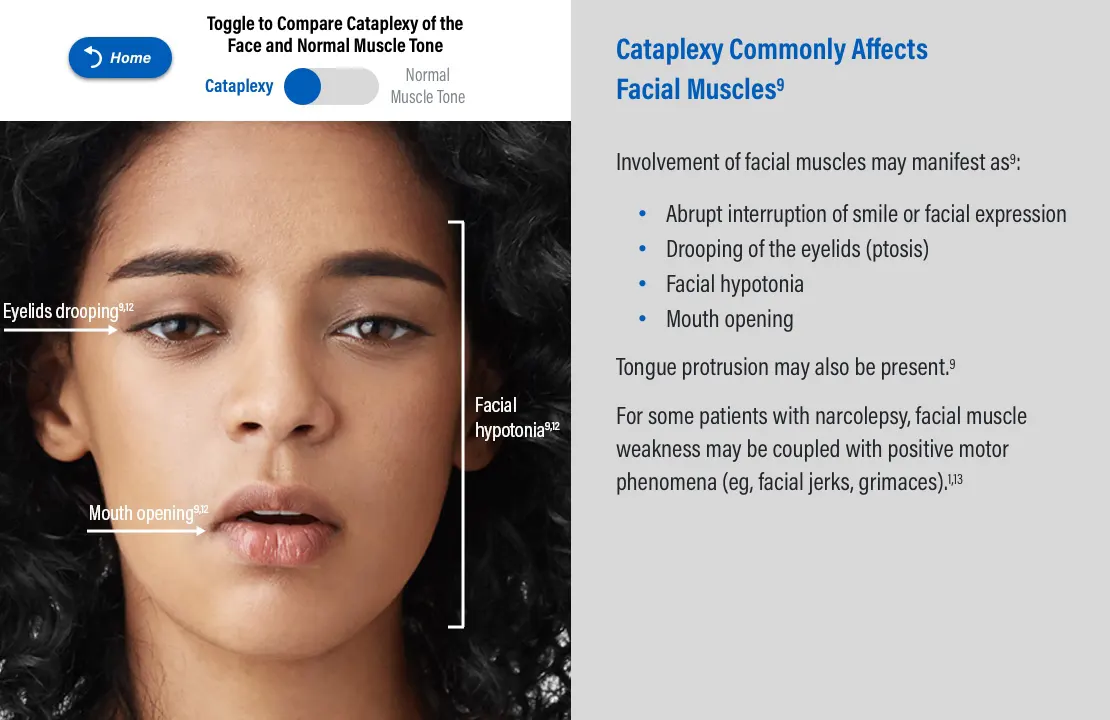Excessive Daytime Sleepiness (EDS)
EDS may present differently among patients1,2
EDS definition per ICSD-3-TR diagnostic criteria: Daily episodes of an irrepressible need to sleep or unintended lapses into drowsiness or sleep1
In adult patients…
- Patients may experience EDS in different ways:
- Inability to stay awake and alert throughout the day1
- Lapses in concentration1,2
- Patients may describe as "tiredness" or "fatigue"2
- Automatic behaviors associated with microsleep episodes1,3
- EDS is more likely to occur in monotonous situations requiring little activity1
- Sitting in class, reading, passenger in a car1,2
Cataplexy
Cataplexy may differ widely among patients1
Cataplexy definition per ICSD-3-TR diagnostic criteria: Generally brief, usually bilaterally symmetrical, sudden loss of muscle tone with retained consciousness1
In adult patients…
- Patients may experience cataplexy in different ways1,4-8:
- Cataplexy commonly affects the head and neck but may affect other areas1,4-6
- Patients may describe as "clumsiness"7
- Cataplexy can be triggered by a range of emotions or situations5,8
